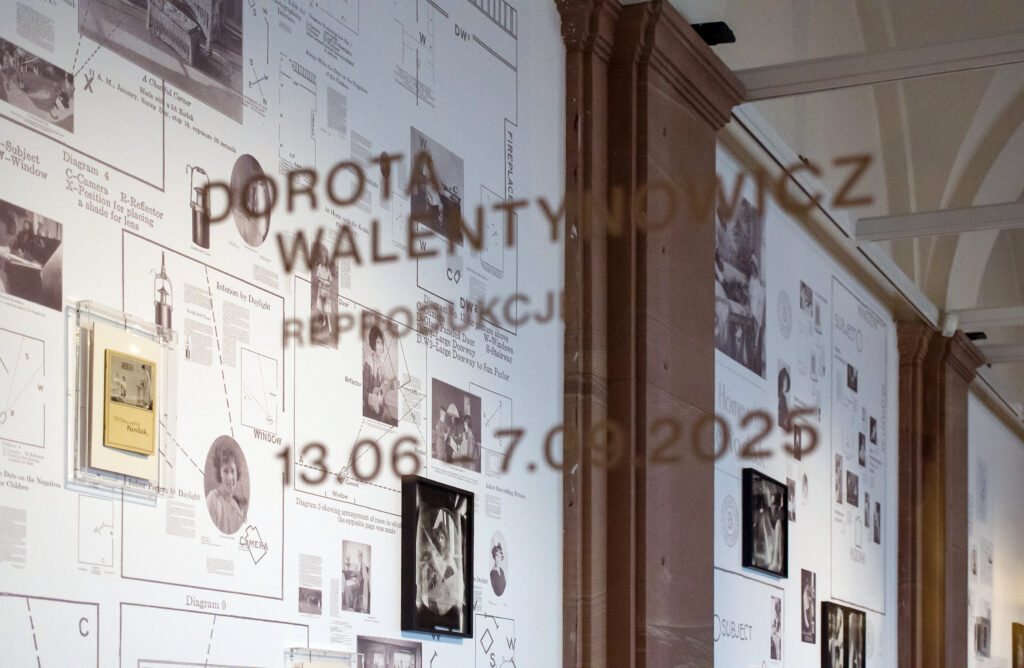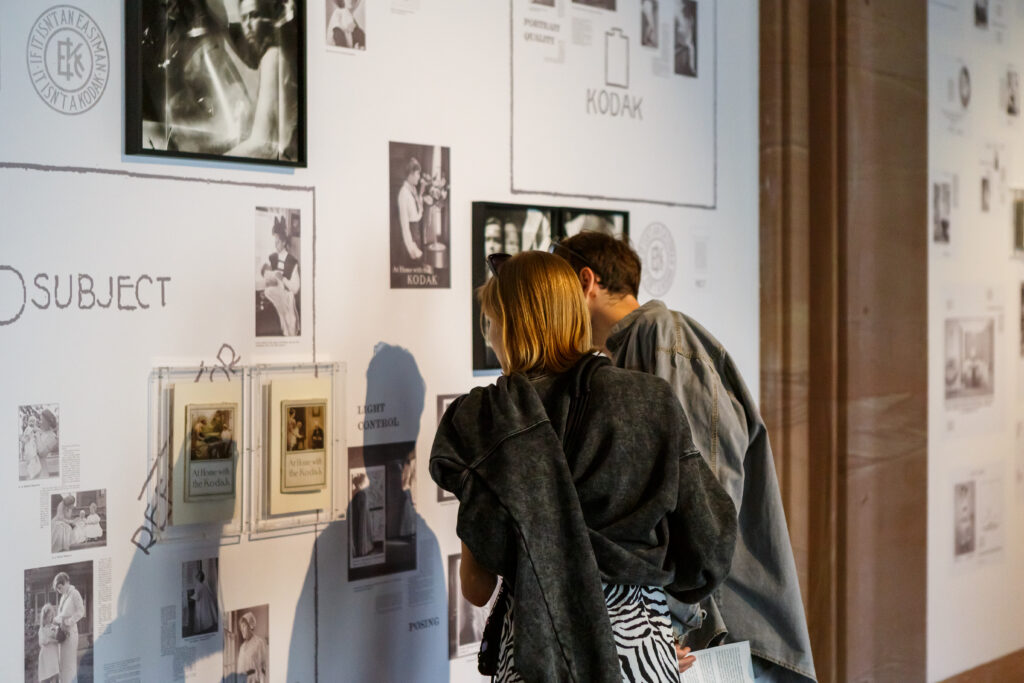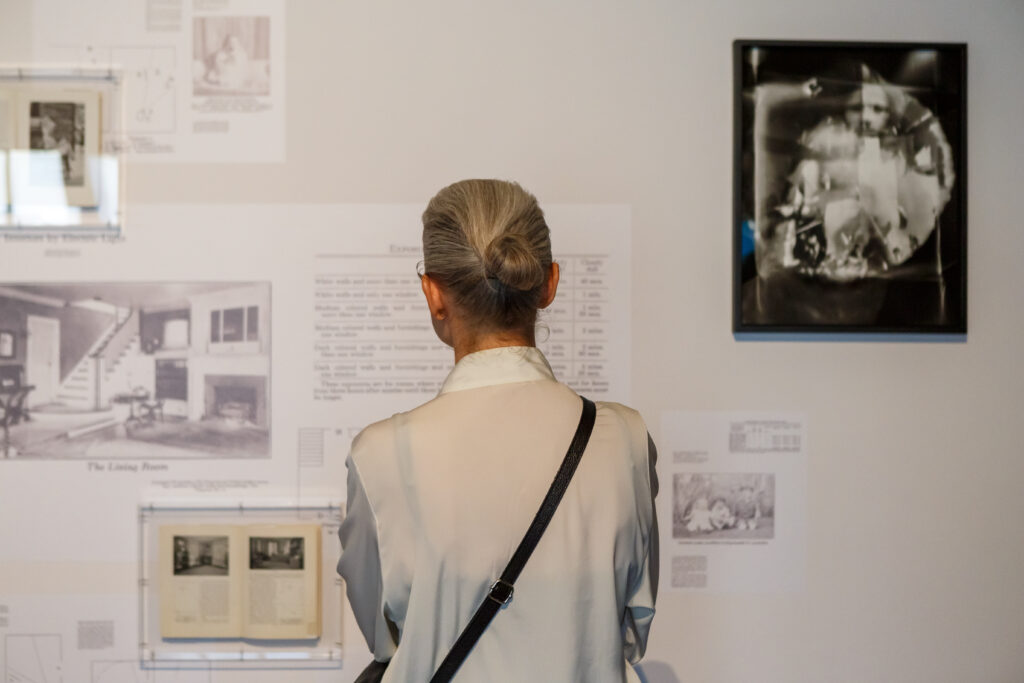an archival investigation 2022/25

Three large-format graphic collages based on Kodak advertising brochures from the early 20th century are the centrepiece of the show. Albeit also aimed at women, their message differed significantly from the slightly earlier narrative targeting the so-called Kodak Girls: modern, emancipated users of the photographic technology. The materials used by Walentynowicz had been intended for housewives, for whom photography would be a means to document the most important family moments. Taking photos became virtually a household duty, while the camera turned into an everyday item, on a par with other domestic appliances.
Kodak’s leaflets combined technical knowledge of composition and equipment specs with the sentimental stories of photography helping one record family history and preserve childhood memories. Nearly all photographs reproduced there showed homestead scenes, whether in interiors or gardens. The Kodak woman no longer travelled by car or worked professionally—the lens of her camera focused exclusively on her home. In the brochure At Home with Kodak, home was said to be „bountiful source of charming activities waiting for the snapshotter”.
As another layer, Walentynowicz places original brochures and her own photographs taken during the COVID-19 pandemic and lockdown on top of the collages. It was the only time when her daily life, like that of the women in the Kodak brochures, was forcibly confined to domestic setting. Despite the similarity, her photographs are almost the opposite of the carefully composed, sentimental frames from the early 20th century. They are dominated by overexposure, random framing and overlapping views. No more than fragments of interiors and glimpses of the artist and her child may be seen.
(text by Gabi Skrzypczak)
.
.
.
.
.
.
.
.
.
.
.
.
.



